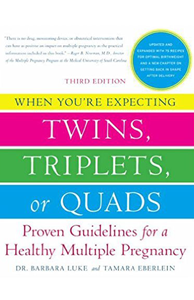Over the past decade, obstetrics has experienced a relatively quiet but dramatic reduction in the rate of preterm birth. The national rate of preterm delivery has fallen more than 10% from its peak of 12.8% in 2006. We aren’t better in predicting who’ll deliver early. There hasn’t been any breakthrough in the development of a more effective tocolytic drug. The financial and racial disparities in the United States have not disappeared.
As is often the case, the most significant improvements in healthcare outcomes are the result of changes in public health policy. For much of the past 5-10 years, the American Congress of Obstetrics and Gynecology, the American Academy of Pediatrics, the Joint Commission, the March of Dimes and other organizations have pushed the so-called “39 week rule.” This rule became necessary because of an unsupportable drift toward earlier and earlier elective deliveries. Obstetricians became more comfortable with the capabilities of our neonatal colleagues and women became more intolerant of the discomforts and uncertainties of pregnancy.
Instead of the old paradigm of term (>37 weeks gestation) and preterm (<37 weeks gestation) birth, obstetricians had to learn a new vocabulary which included designations such as “late preterm” (34 0/7-36 6/7 weeks gestation), “early term” (37 0/7-38 6/7 weeks gestation) and “late term” (> 39 0/7 weeks gestation). Evaluations of large delivery databases confirmed that deliveries between 37 0/7 and 38 6/7 weeks were associated with increased short- and occasionally long-term neonatal morbidity compared to deliveries after 39 weeks (ACOG Comm Opinion # 561). Moreover, elective “late preterm” deliveries were even more dangerous with neonatal mortality rates ranging from 4.8 at 35 weeks to 1.7 at 37 weeks gestation per 1000 live births.
The March of Dimes popularized the belief that every child deserved its 39 weeks. The campaign against elective deliveries < 39 weeks gestation caught on with insurance companies, hospital groups, state and federal regulatory agencies. Doctors and mid-wives lose interest in things when they aren’t going to be paid forthem. Not surprisingly, rates of elective “late preterm” and “early term” delivery disappeared in many, if not most, hospitals. Jay Iams, MD organized an Ohio Perinatal Quality Collaborative group that almost wiped out these deliveries in his state.
Two recent national studies have quantified the impact of this public health policy change. Little and colleagues used national birth certificate data to identify a 10.3% reduction in “early term” births (37 0/7-38 6/7 weeks) from 31.8% of all deliveries in 2005 to 28.5% in 2011. There was wide variability among the states ranging from a 25.5% reduction in Jay Iams’ home state of Ohio to a 3.9% reduction in Arkansas.
MacDorman and associates used data from the National Center for Health Statistics to look at the distribution of live births between 2006 and 2012. They found that the distribution of live births decreased by 10-16% between 34 and 38 weeks gestation while the percentage of live births at 39 weeks increased by 17%. Both of these studies were consistent with the national effort to reduce both elective “late preterm” and “early term” deliveries.
Unfortunately, even a rainbow can draw a criticism from someone that the colors fade at the ends. Critics of the “39 week rule” argue that the additional weeks in utero leading to 39 weeks can put some fetuses at risk, especially if the rule bleeds over into medically-indicated deliveries instead of purely elective deliveries. Some argue that an excess of stillbirths may be an unintended consequence of the “39 week rule.”
The good news is that the same aforementioned studies indicate that stillbirth rates have not risen as the rates of elective delivery have fallen. In the Little study, the authors found no corresponding increase in the stillbirth rate as the rate of elective term deliveries fell by 10.3% between 2005 and 2011 ( Stillbirth rate: 123/100,000 vs 130/100,000 deliveries; p=0.189). The MacDorman group found no increase in the prospective stillbirth rate between 21 and 42 weeks gestation despite the falling rates of non-medically indicated deliveries in the United States.
While there are always critics of something obviously good, of equal concern are the zealots who can’t see anything but the good. In our zeal to prevent “elective” deliveries, we must not paint indiscriminately with that brush. Women with true medical or obstetrical complications need to be delivered when they need to be delivered. Inappropriate prolongation of complicated pregnancies can increase both maternal and fetal risks.
Interestingly, in the Little analysis, the rate of “early term” birth among gestational and pre-gestational diabetics declined from 42.4% to 36.7% between 2005 and 2011; just as it did among the low-risk population. However, the stillbirth rate among diabetics rose 25% during that same time from 238/100,000 to 300/100,000 deliveries.
It seems clear that the reduction in elective “late preterm” and “early term” deliveries will not only reduce our national preterm birth rate, but will also reduce unnecessary cesareans, neonatal ICU admissions, prolonged hospital stays, newborn complications as well as neonatal mortality on rare occasions. But, as a child of the 60’s, I know that rules are meant to be broken. In the practice of Maternal-Fetal Medicine we must constantly evaluate whether a given fetus is better off delivered or left in utero. (Spong et al, Timing of indicated late preterm and early term birth. Obstet Gynecol 2011).
The art of medical and obstetrical practice must always be considered along with the rules.
Off topic, a great obstetrician/gynecologist and her equally great neonatologist husband are leaving soon for home. It is always sad when talent moves away, but it is more so when they are your friends. Our loss is Pittsburgh’s gain. I will always think of Gretchen when I hear Badlands by Bruce Springsteen. It is her favorite Springsteen song and I can still see her pumping her fist on the back row of the North Charleston Coliseum. If you listen to the video you’ll be able to hear Gretchen singing the chorus at the Boss’ insistence.
“For the ones who had a notion; a notion deep inside
That it ain’t no sin to be glad you’re alive
Wanna find on face that ain’t looking through me
Wanna find one place, I wanna spit in the face of these
Badlands”








Time to play Devil’s Advocate…what about the Nicholson data presented at SMFM? In particular the Ohio data?
Both Jim and I will miss you and Diane greatly. We will always think of you and some really great Charleston memories anytime we hear the Boss…we’ll keep pushing til we understand (just in Pittsburgh now)…
Absolutely, Keep pushing till you get your facts learned. We’ll miss you guys too.
We’ve got our Pittsburgh Park on our wall and think of you guys whenever I look at it.
My goal is to find the appropriate Springsteen song to end each blog!!